Are you planning on planting Black-eyed Susans and want to know more about them? Are you curious about how tall these gorgeous flowering plants get? Luckily, we've done some research and have the answer for you!
The wide variety of Black-eyed Susans also implies that they grow to different maturity heights. These beautiful plants typically reach a height of at least 15 inches and can be as tall as 72 inches (1 to 7 feet).
Now that you know the heights that Black-eyed Susans get, let's learn more about them. We'll start with their basic requirements for growth and tackle several frequently asked questions. You will also learn about three care materials that Black-eyed Susans need. Let's begin!

How Tall Do Black-Eyed Susans Get?
The Black-eyed Susan gets its name because of its flowers: the flowers are of yellow and orange color with black-colored centers, which look like an eye.
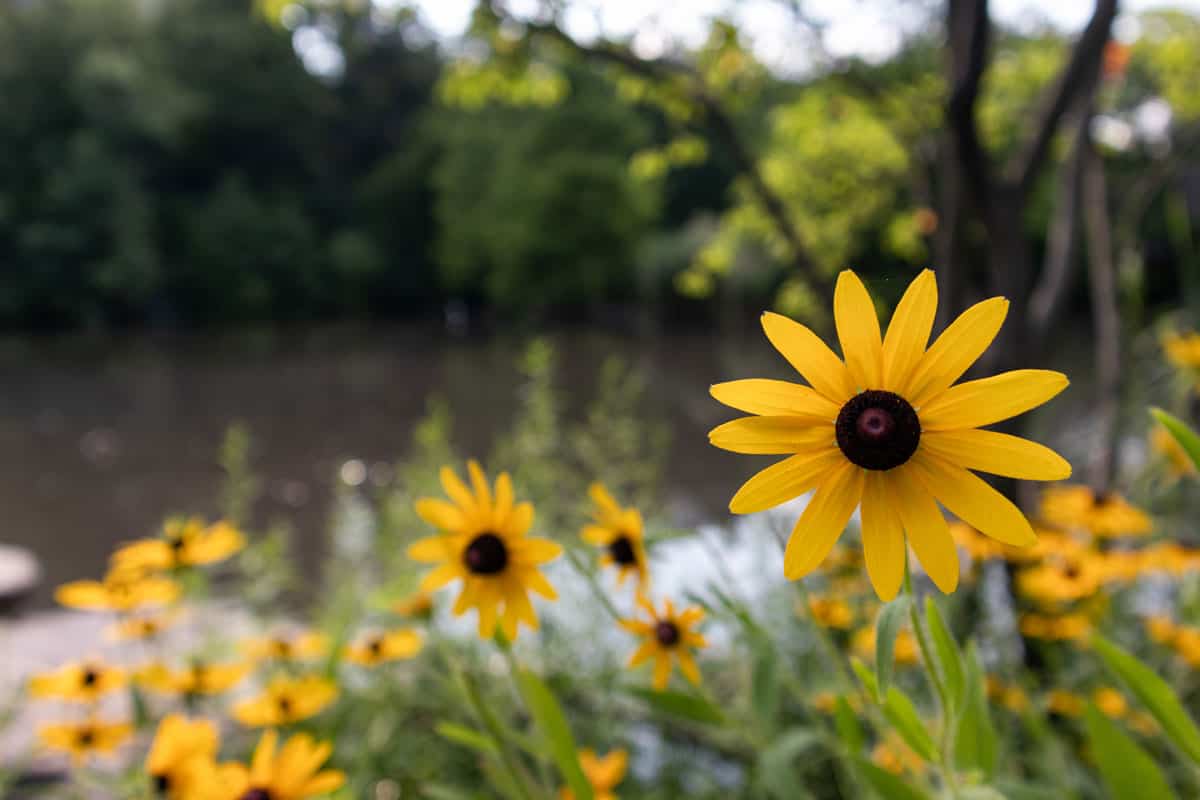
Black-eyed Susans come in various kinds and sizes. It's incredible how some types can grow to a mere 15 inches, and some can reach 72 inches in length.
Some varieties of Blacked-eyed Susans, such as the Indian Summer and Prairie Sun, can grow to around 24 to 36 inches tall. And the Giant Black-eyed Susan (Rudbeckia Maxima) can grow up to seven feet!
What Does A Black-Eyed Susan Need To Grow?
This section will help you discover some of Black-eyed Susan's essential needs.
Soil
The Black-eyed Susan can thrive in almost all types of soils, like loam, clay, and sandy soils. You can make simple adjustments to the kind of soil you have.
For example, if you plant it on sandy soil, you only need to add humus to allow the earth to maintain moistness.
Water
Black-eyed Susans need a moderate supply of water. They are relatively drought-tolerant, but you shouldn't leave the soil dry.
Because these plants are susceptible to deteriorating in muddy soil, you must water them when the topsoil is parched.
Ensure that you provide your plants with sufficient water if you want your plants to have healthy and long roots.
Sunlight
Black-eyed Susans need full sun to grow best. They need about six to eight hours of direct sunlight per day. Although Black-eyed Susans can endure shade, they may extend and outspread toward the sun.
FAQs About Black-Eyed Susan
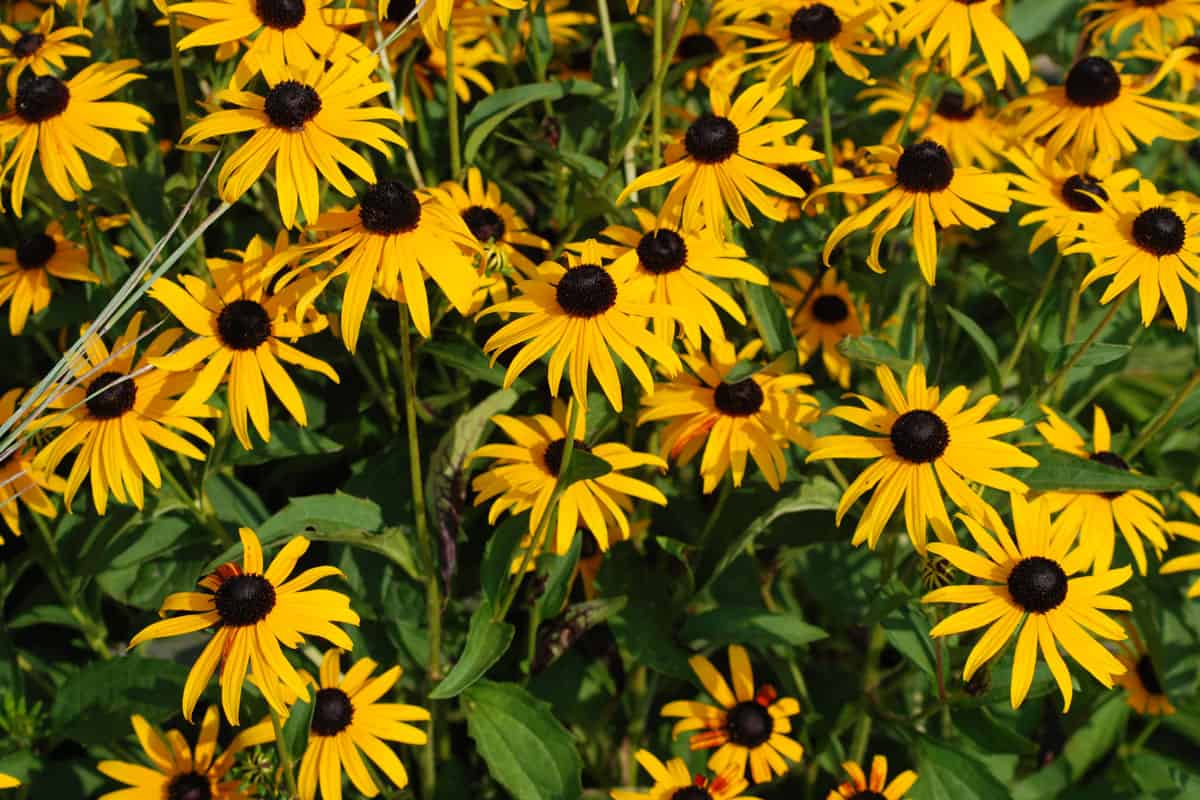
Here are several frequently asked questions about Black-eyed Susans.
Is Black-Eyed Susan Hard To Grow?
Black-eyed Susans are versatile and pretty easy to grow. They can brighten your house or garden with bright yellow and orange flowers.
Black-eyed Susans only need full sun, moderate water, and well-drained soil. They don't require much attention and are self-seeding. Just remember not to over-fertilize or over-water the plants.
How Quickly Do Black-Eyed Susans Grow?
Black-eyed Susans quickly spread and grow. They can spread through root propagation and by self-seeding.
Planting your Black-eyed Susan seed in the garden only takes ten days to sprout. A Black-eyed Susan can reach maturity in about 60 days.
When Should You Plant Black-Eyed Susans?
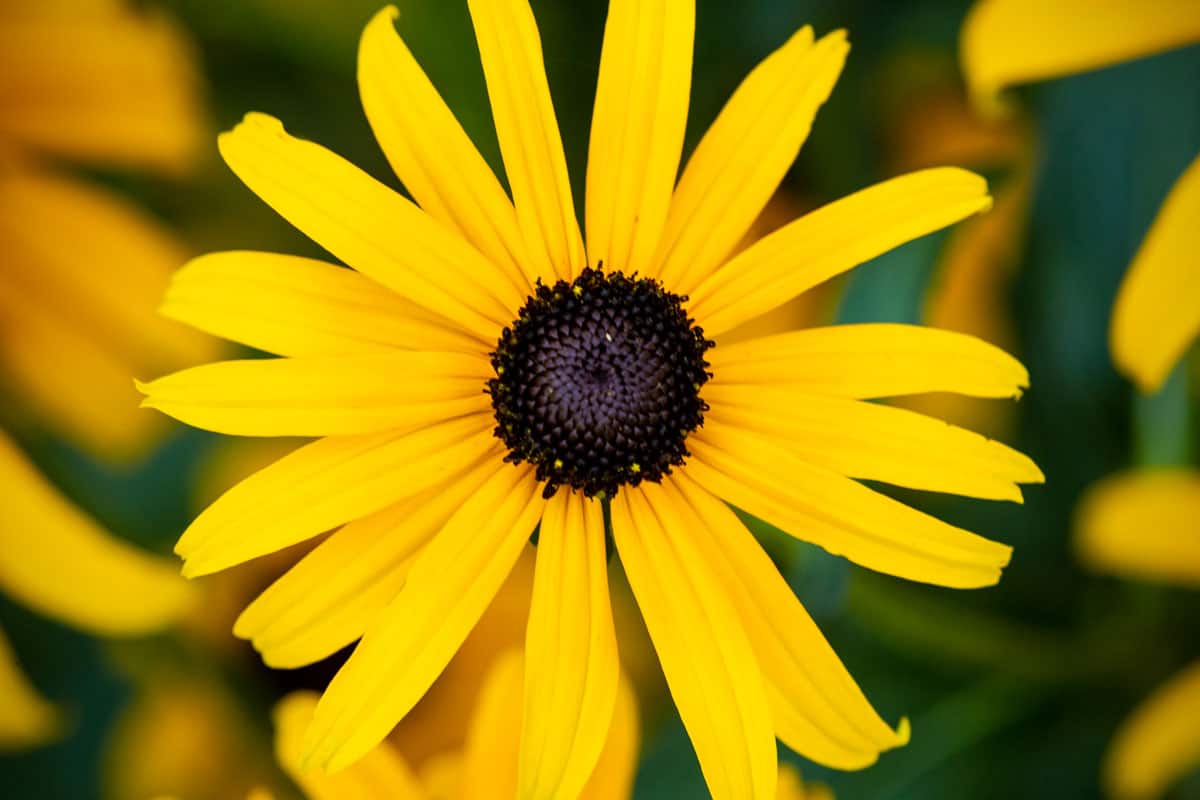
When is the perfect time to plant Black-Eyed Susans? The answer would be between spring and early fall.
Black-eyed Susans will be perfectly fine if they can develop roots before the climate gets too hot or freezing.
Why Are My Black-Eyed Susans So Tall And Floppy?
There are several factors why a Black-eyed Susan gets so tall and sometimes floppy.
Here are some reasons why they can get taller than they should be:
- Over-fertilized or overly rich soil
- Too much rain or water intake
- A change in plant genetics or DNA
And here are the main reasons why they get floppy:
- Lack of sunlight
- The plant needs propagation or division
What Plants Can You Pair With Black-Eyed Susans?
Black-eyed Susans bloom from June to September. They can beautify any garden, meadow, or area with beautiful yellow and orange flowers and black centers. You can perfectly pair Black-Eyed Susans with other blooms such as echinacea, perennial hibiscus, and ornamental grasses.
What Is Attracted To Black-Eyed Susans?
Black-eyed Susans attract pollinating insects like bees, moths, and butterflies. These pollinators are especially attracted to Black-eyed Susans because the blossoms give firm places for them to land.
How Far Apart Should You Plant Black-Eyed Susans?
When planting your Black-eyed Susan, you should space your plants between 12 and 18 inches apart. This spacing ensures ample air circulation and avoids overcrowding.
How Do You Get Black-Eyed Susans To Rebloom?
Do Black-Eyed Susans Spread?
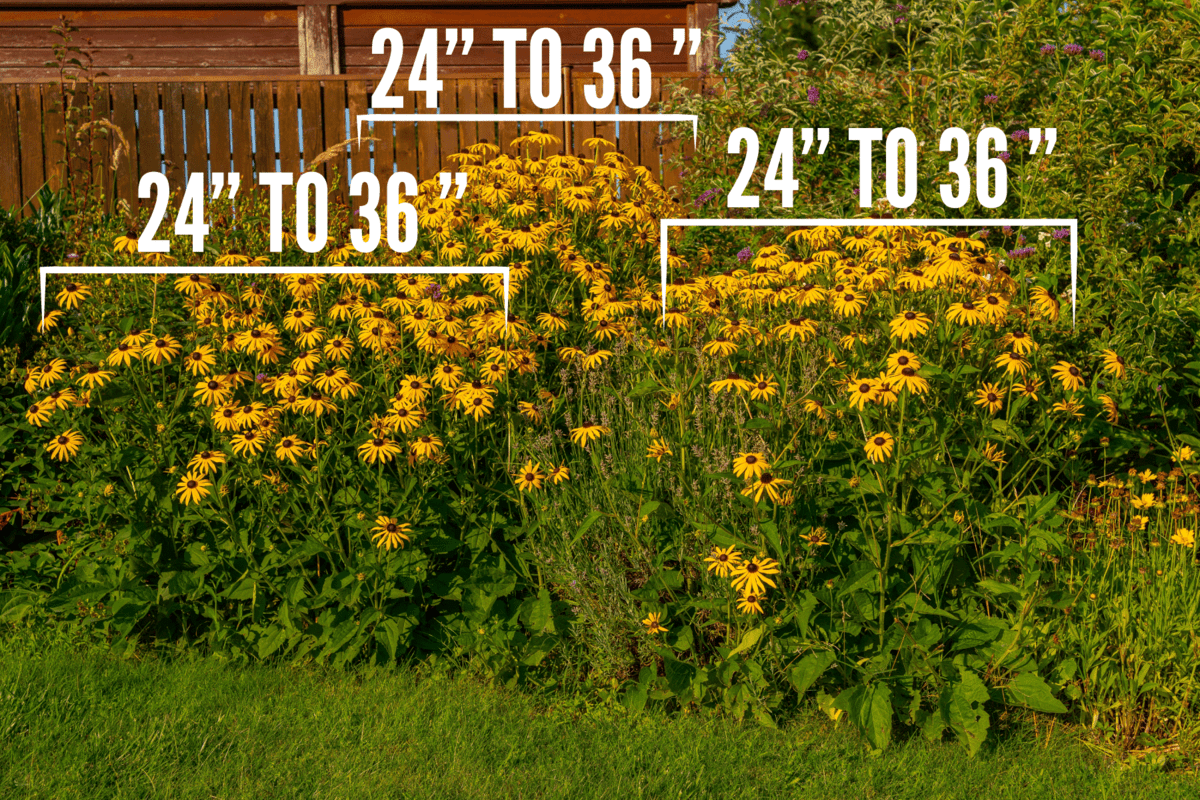
The average growth of Black-eyed Susans is between 24 to 36 inches, and they can spread significantly if they are in the right environment.
Plants usually spread through wind, water, and animals. Black-eyed Susan can spread by self-seeding and through their underground stems.
If you want to restrict the seed spread, you can do these two things.
- Split the lumps every four or five years.
- Cut the deadhead spent flowers to control self-seeding.
Do You Have To Re-Plant Black-Eyed Susans Every Year?
It depends on the type of Black-eyed Susans you have. Some Black-eyed Susans are annuals, biennials, or perennials. You can plant annuals per season but they may pop up independently after saving seeds during fall.
Biennials conclude their life cycle in two growing periods. And perennials bloom yearly.
Do Black-Eyed Susans Come Back Every Year?
Planting new Black-eyed Susan seeds every season will ensure a fresh bloom. As mentioned before, there are perennial Black-eyed Susans that blossom yearly.
Can Black-Eyed Susans Survive The Winter?
Black-Eyed Susans can resist damage during winter or low temperatures by perishing in the soil during fall and remaining inactive until springtime.
What Are The Common Pests And Diseases That Affect Black-Eyed Susans?

Black-eyed Susan can face plant diseases, fungi, and pest infestations. We've listed several plant nuisances and conditions you should know when growing a Black-eyed Susan.
Fungi-Related Problems
- Angular Leaf Spots
- Botrytis Blight
- Downy Mildew
- Fungal Leaf Spots
- Powdery Mildew
- Rust
- Southern Blight
- Stem Rot
- White Smut
- Verticillium Wilt
Diseases Due To Phytoplasmas
- Aster yellows
Bug And Pest Problems
- Aphids
- Asiatic garden beetle
- Crescentmarked lily aphid
- Fleahopper
- Four-lined plant bug
- Fuller rose beetle
- Nematodes
- Sawflies
- Slugs
- Snails
- Stalk Borer
- Twospotted spider mite
- Whiteflies
To solve or prevent these problems, you must practice several things:
- Ensure adequate air circulation by providing enough space between them.
- Try not to get the Black-eyed Susan's leaves drenched when watering.
- Clear and throw infected leaves in the trash to control the fungal spread.
- Plant in full sun to lessen mildew problems.
- Trim your Black-eyed Susan to allow for good air circulation.
A Few Products We Recommend For Black-Eyed Susans
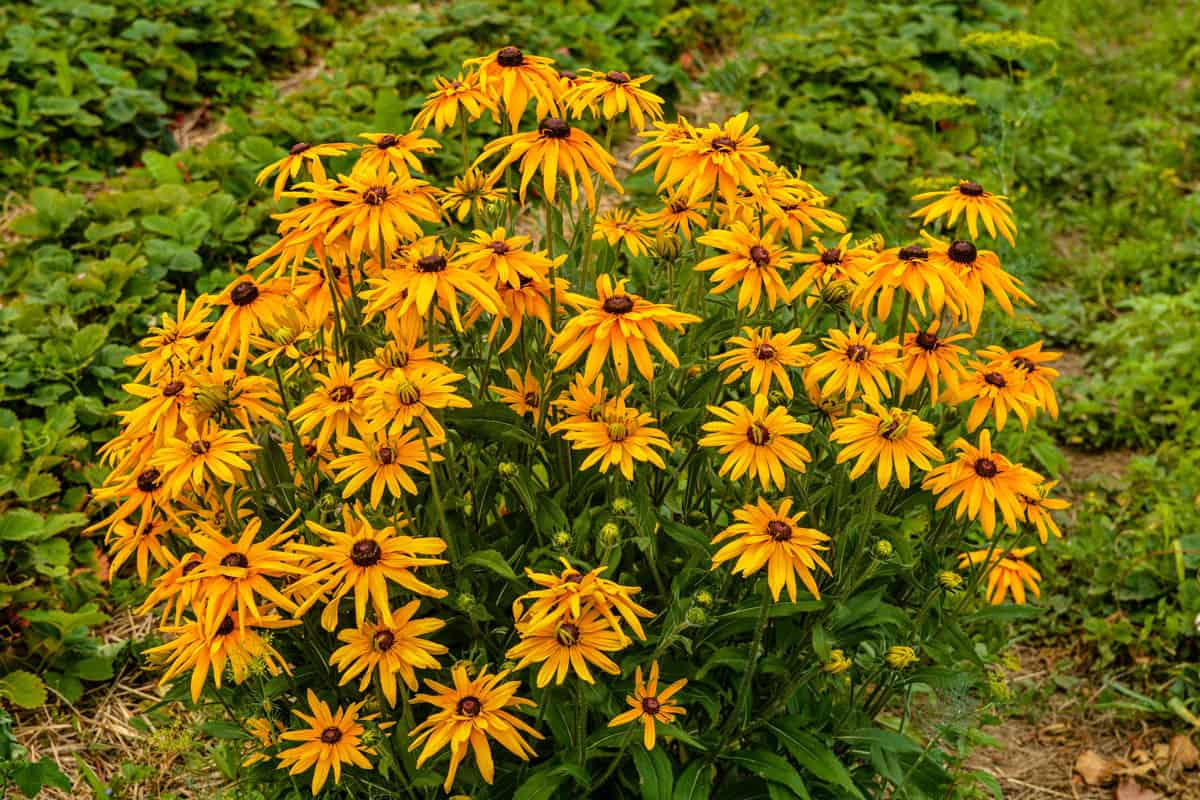
Here are additional care materials and products for your Black-eyed Susan:
General Purpose Slow-Release Granular Fertilizer
If you want to grow the best black-eyed Susan, remember not to over-fertilize it. Doing so causes the flower stems to become weak or floppy.
If you decide to fertilize your Black-eyed Susan, it's best to fertilize it once or twice yearly with an all-purpose, slow-release coarse fertilizer.
Click here to see this fertilizer on Amazon.
Key Features:
- Certified organic and OMRI listed
- Improves soil conditions
- Fast-acting fertilizer
Large Grow Container/Pots For Indoor Black-Eyed Susan
Place your Black-eyed Susan in a large pot or container of at least one gallon (4 Liters). And put it in an area that acquires full and direct sunlight.
Click here to see these pots on Amazon.
Key Features:
- Made of sturdy, thickened, nonwoven fabric
- BPA-free
- Great drainage
Organic Compost For Mulching
Mulching around your plant and root area is an excellent idea if you want to enhance the soil texture and moisture retention for your Black-Eyed Susan.
Organic compost also provides the needed nutrients for your plant.
Click here to see this compost on Amazon.
Key Features:
- Enhances soil structure & air circulation
- Safe for use
- OMRI-Certified for Organic Use
Neem Oil
Black-eyed Susans can have problems with insects and pests. Neem oil is an essential remedy for a handful of pest diseases. It can also stop bugs from eating your plants.
Click here to see this oil on Amazon.
Key Features:
- Multi-purpose pest killer
- Dormant spray
- For organic gardening
To Finish Up
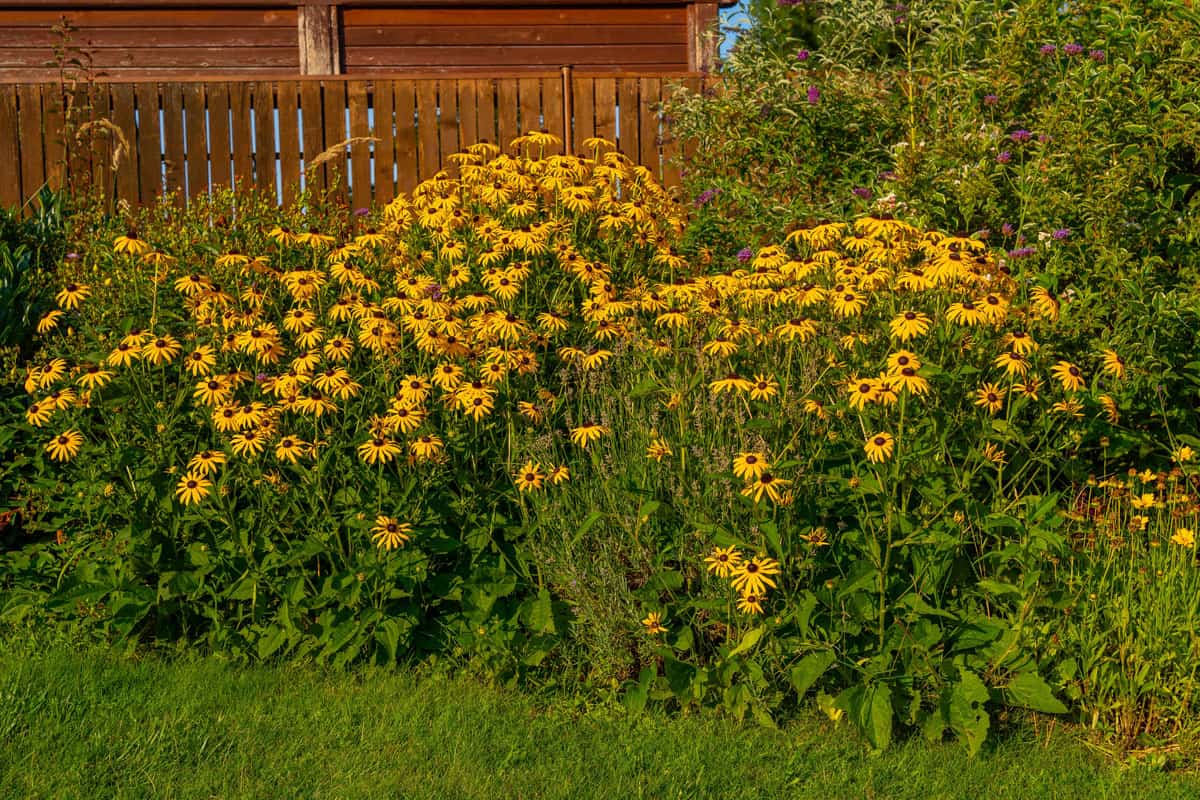
Black-eyed Susans grow to various lengths - it depends on what kind of Black-eyed Susans you have. The smaller types grow between one and three feet in height. And the giant ones grow between four and seven feet tall.
Remember that growing the best Black-eyed Susans requires full sunlight, enough water, and rightly fertilized soil. And ensure that you have the materials and products to help your plant counter specific problems.
While we have your attention, check out these helpful related posts!
Does Black Eyed Susan Spread? [And How To Prevent This]
15 Best Fertilizers For Black-Eyed Susans [When And How To Apply]






